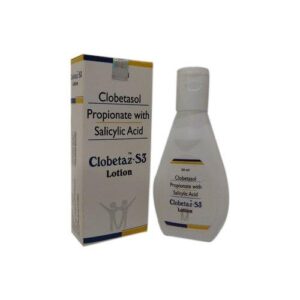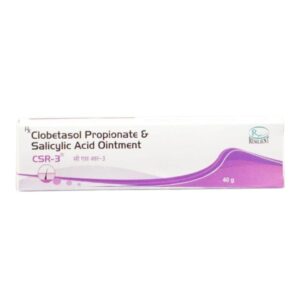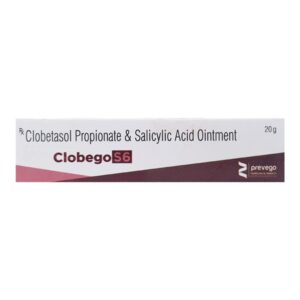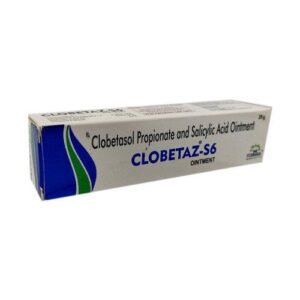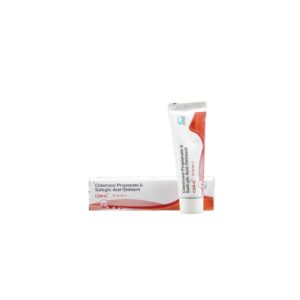SALICYLIC ACID + CLOBETASOL
Salicylic Acid: Salicylic acid is a medication commonly used for the treatment of various skin conditions, including acne, warts, psoriasis, and dandruff. It belongs to the class of drugs known as keratolytics, which work by helping to shed dead skin cells from the outer layer of the skin.
The mechanism of action of salicylic acid involves its ability to break down keratin, a protein that forms part of the skin’s structure. By dissolving the keratin in the top layers of the skin, salicylic acid helps to exfoliate and unclog the pores, preventing the formation of comedones (blackheads and whiteheads). It also has anti-inflammatory properties that can help soothe redness and inflammation associated with certain skin conditions.
Salicylic acid is available in various formulations, such as gels, creams, lotions, and shampoos. The recommended dose and application frequency may vary depending on the specific product and the condition being treated. It is important to read and follow the instructions provided by the manufacturer or as prescribed by a healthcare professional.
Common side effects of salicylic acid may include skin irritation, redness, dryness, peeling, and a burning sensation. These side effects are usually mild and temporary, but if they persist or worsen, it is advisable to discontinue use and consult a healthcare professional.
Some individuals may be more sensitive or allergic to salicylic acid, and rare cases of serious allergic reactions have been reported. Signs of an allergic reaction include rash, itching, swelling, dizziness, and difficulty breathing. If any of these symptoms occur, it is important to seek immediate medical attention.
It is also worth noting that salicylic acid should not be used on open wounds, irritated or sunburned skin, and should be avoided during pregnancy or breastfeeding without consulting a healthcare professional.
As with any medication, it is always best to consult with a healthcare professional before using salicylic acid, especially if you have any pre-existing medical conditions or are taking other medications.
Clobetasol: Clobetasol is a potent corticosteroid drug that is used to treat various skin conditions such as eczema, psoriasis, and dermatitis. It belongs to a group of medications known as glucocorticoids.
The drug works by reducing inflammation, itching, and redness in the affected area. It does this by suppressing the immune response and inhibiting the release of certain substances in the body that cause inflammation.
Clobetasol is available as a cream, ointment, foam, or shampoo, and the specific formulation depends on the condition being treated. It should only be used on the skin and scalp and should not be applied to the face, groin, or underarms unless specifically directed by a healthcare professional.
The recommended dose and duration of treatment with clobetasol will vary depending on the severity of the condition and the individual patient. It is important to follow the instructions provided by the healthcare professional or read the patient information leaflet that comes with the medication.
As with any medication, clobetasol can cause side effects. Common side effects include skin thinning, skin discoloration, burning or stinging at the application site, and acne-like eruptions. Prolonged use of clobetasol or using it on large areas of the body can increase the risk of systemic side effects such as suppression of the adrenal glands, which may result in reduced production of natural steroids in the body. Long-term use can also lead to skin atrophy (thinning), stretch marks, and increased vulnerability to infections.
It is important to use clobetasol only as directed and to inform your healthcare professional if you experience any severe or persistent side effects. They will be able to provide guidance on how to manage these effects or adjust your treatment if necessary.

